Province América
Latina e Caribe
As Irmãs das Escolas de Nossa Senhora chegaram à América Latina respondendo ao chamado de Deus através de bispos e de outras congregações, para atender às necessidades das famílias migrantes e da educação.
No ano de 1915, a Congregação na América do Norte recebeu a solicitação dos padres redentoristas para estabelecer uma missão em Porto Rico e proporcionar educação às crianças de famílias pobres, assumindo também o trabalho catequético.
Vinte anos se passaram e um novo chamado chegou. Desta vez, de famílias que haviam migrado da Alemanha para Santa Catarina, no sul do Brasil, para ajudar na educação e na catequese. Em 1935, as primeiras HENS chegaram ao Brasil, estabelecendo-se na cidade de Forquilhinha, no estado de Santa Catarina, assumindo a administração de um hospital.
Respondendo às novas necessidades na região sudeste do Brasil, as primeiras oito irmãs da Baviera chegaram ao porto de Santos em 1937. Algumas foram designadas para ajudar no hospital, outras em orfanatos e na educação.
Alguns meses depois, as irmãs da Baviera foram chamadas pelos bispos da Argentina para atender às necessidades de seu povo. Em janeiro, julho e dezembro de 1938, chegaram grupos de irmãs para cuidar de um hospital, um lar para idosas e dois lares de crianças. Em 1952 e 1958, começaram seu ministério nas escolas.
O tempo passou e, no ano de 1950, o Papa Pio XII foi a voz dos tempos. Ele pediu às congregações que enviassem religiosas aos países de missão.
A resposta veio de várias províncias da América do Norte. Nosso carisma começou a se expandir na Bolívia, Chile, Guatemala, Honduras, Peru, Paraguai, México e, mais tarde, na educação formal e no ministério que sempre se entrelaçou com o serviço aos mais vulneráveis.
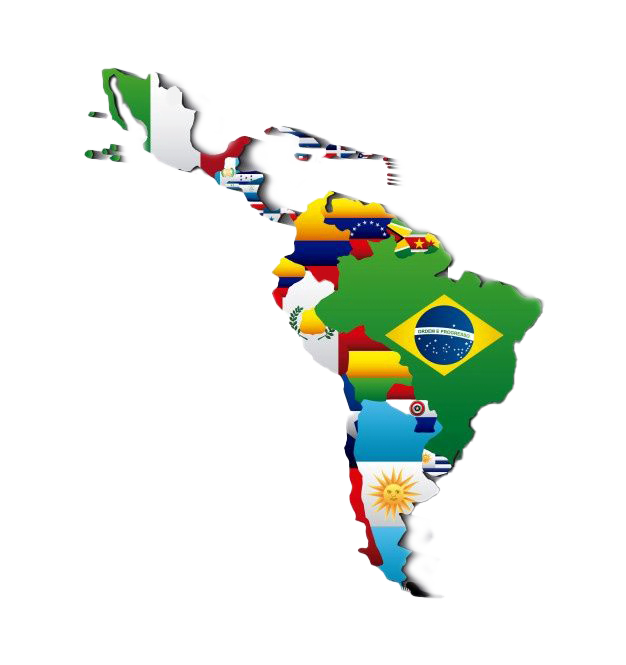








Get to know below a little of history of first Sisters School arrivals in ours Province.
On October 15, 1935, the first five School Sisters of Notre Dame arrived in Brazil from Silesia. They landed in Florianópolis and presented themselves to the then archbishop, Dom Joaquim Domingues de Oliveira.
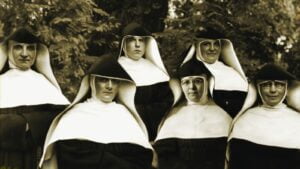
The names of the first sisters who left their homeland, Germany, as pioneers who arrived in Brazil, in Forquilhinha. S.C. were: Sisters Maria Adolfine Meissner, Emeline Mahlich, Maximilia Kaboth, Honesta Joneck, Apolonia Langer and Maria Acchilea.
After several negotiations with the archbishop, they got back on the road and finally reached their destination. Forquilhinha, a small German colony in the south of the state of Santa Catarina, on October 21, after a journey full of adventures. There they settled in a modest little house provided by a local teacher.
Once they had started their mission, they taught elementary school and handicrafts to the young daughters of German immigrants.
Although the Congregation's specific objective was not focused on health care, in obedience to the Archbishop's orders, on November 8, 1936, the School Sisters of Notre Dame took over the administration and nursing service of the small São José Hospital, in the seat of the municipality of Criciúma, not far from Forquilhinha. With total dedication, in the midst of countless difficulties, they dedicated themselves to serving the sick, laying the foundations for this hospital to become one of the largest and best hospitals in the region over the years.
Despite all the setbacks, under God's blessings, Mother Teresa's work in Brazil was growing. New candidates for religious life were constantly coming forward. Thus, in 1938, it was already possible to begin the novitiate. However, the necessary conditions were not yet in place.
For this reason, the first two postulants were sent to the novitiate in Breslau (Germany). However, war broke out and they were only able to return to their homeland after the war had ended.
With the arrival of a few more German missionaries, who joined the first group, it was possible to start answering many requests from priests and bishops who needed collaborators "to bring the good news to the poor". It was in response to these appeals that the Congregation began to spread to other states
There were eight pioneering and founding sisters of the São Paulo Vicariate. Sister Maria Recaldis, Sister Maria Gunthilde, Sister Maria Bonaventura, Sister Maria Irmingard, Sister Maria Hygina, Sister Maria Dicentia, Sister Maria Deícola and Sister Maria Tuskana.
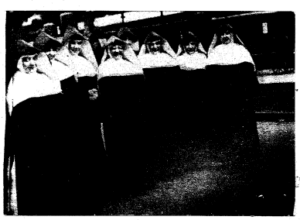
On January 15, 1937, all eight sisters gathered in Munchen-Um, where they were welcomed by the local community. They remained in this community until April 14, 1937, when they began their journey to Brazil. During the three months that they stayed in this community, a theology student, of Brazilian origin and a member of the Congregation of the Most Holy Redeemer, CSSR, who was studying at the Major Seminary of this Congregation in Gars am Inn, gave these future missionary sisters their first Portuguese lessons with great care, zeal, love and dedication. Once this phase was over, they began their journey.
On April 4, 1937, saying goodbye to Spiritual Father Rudolf Gerg, they left Munich by fast train for Hamburg. At 8 o'clock in the evening of the same day, the train arrived in Hamburg. The Sisters stayed at St. Raphael's Boarding House. They took advantage of the short time they had to visit the Tropical Institute. On April 6, 1937, they boarded the ship Cap Ancona. The voyage lasted 14 days, arriving at the port of Santos on April 21, 1937.
In Santos, they were received by Mr. Francisco Malzoni and Sister Maria Adolfine Meissner, the newly appointed Vicar. The Sisters stayed for a few days at the Stella Maris House of the Canons of St. Augustine in Santos. They then traveled to the city of São Paulo, again staying at the Institute of the Canons of St. Augustine.
On April 27, 1937, five sisters, destined for the Matão Hospital, traveled there in the company of Mr. Malzoni and Sister Adofine. In Matão, the sisters settled permanently in their new home on July 18, 37.
Conhecedores da perseguição religiosa na Alemanha, os Bispos de Rosario, Mercedes e Paraná (Argentina) ofereceram à Madre Almeda sete lugares onde se precisavam de irmãs, seja em hospitais ou em asilos. Somente após muita consulta, reflexão e oração, e com a confiança depositada na Divina Providência, em Maria Santíssima e na Madre Teresa, a Madre Almeda deu seu “Sim” para a primeira fundação na Argentina. Foi no dia 12 de outubro de 1937.

Das voluntárias que haviam dito seu “Aqui estou, Senhor, envia-me”, foram escolhidas sete irmãs da Baviera: M. Magda, M. Solaria, M. Emilia, M. Cleta, M. Medrana, M. Envía e M. Myrian, como pioneira e responsável pela fundação.
As irmãs partiram em 30 de dezembro munidas da bênção e da cruz missionária do Cardeal Faulhaber, e pisaram em solo argentino em 26 de janeiro de 1938. Sentiram-se desde o primeiro momento acolhidas e protegidas na mão paternal de Deus.
Em 28 de janeiro de 1938, as Irmãs assumiram a administração do Hospital Municipal, General Arenales, na diocese de Mercedes.
Em julho e dezembro do mesmo ano, chegaram mais dois grupos de irmãs. Elas assumiram a administração de um lar para idosas, em Junín, e de um Lar de Crianças na Colônia Infantil Minha Esperança, um lar para os filhos saudáveis de pais com hanseníase. Também lhes foi solicitado que cuidassem de um lar de crianças cegas em Villa Lynch.
No ano de 1939, chegaram mais duas irmãs da Baviera e, anos mais tarde, em 1950, 1952 e 1954, somaram-se à missão mais três irmãs.
Anos mais tarde, iniciaram seu ministério nas escolas, fundando o Colégio São José em San Javier, Santa Fe, em 1952, e o Colégio Nossa Senhora de Luján em Adrogué, Buenos Aires, em 1958. Continuando com a colaboração pastoral nas paróquias de cada localidade e respondendo às necessidades dos pobres e ao chamado dos bispos, em 1987, fundaram uma missão em San José de los Arroyos, Paraguai, dedicando-se à educação e à pastoral durante seis anos. Em 2006, as irmãs fundaram uma comunidade em Santa Elena, Entre Rios, desenvolvendo seu ministério em um colégio paroquial e na pastoral com jovens e crianças.
In the 1950s, at a Sunday Mass in Canada, in each parish, the priests read a letter from Pope Pius XII about the great need for missionaries to go to Latin America.
The province of Canada heard this call and, in 1961, sent four sisters - Marcella Reitael, Martin de Porres Kimpel, Helen Zettel and Mildred Straus - to La Paz, Bolivia. Their main ministry was education in schools. Later, 2 Sisters arrived from the United States to work in the Altiplano and others in Soprente in the Bolivian Valleys. In 2011, the mission in La Paz was closed. The others closed earlier.
In 1965, three sisters from Canada arrived in Lima - Peru: Martin de Porres Kimpel, Corrine Schnurr and Agnes Begin. Later, others came, some from the Wilton Province of the United States. Throughout the years, their main ministry was education, health and social ministry. The communities were made up of the missionaries and, later, Peruvian Sisters as well.
In Chile, in 1964, the first Sisters arrived from the United States.
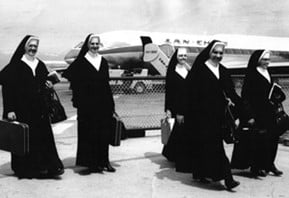
The first five sisters were Maria Jose Tresch, Maria Eugenia Ortiz, Mary Anne O'Connor, Mary Meehan, M. Ruth Strothmann and M. Georgita Lidner. Their main ministries were education and the formation of a community that already existed in San Felipe with the Jesuits.
The last Sisters left Chile in 2015, when Sisters Elena Nelson and Patricia Ferrick ended their mission in the Andes.
In Guatemalait was an extension of the Mankato MN Province mission in 1962, in our first mission in Nahuala, Sololá. Sister Janet Druffel and Sandra Spencer (Sister Filomena) were some of our first missionaries. Sister Mary Bertrand, who lived in Nahuala, was the last sister to be in Guatemala when she returned to the United States in 2022, ending our physical presence there. During our years in Guatemala, we had sisters from all the North American provinces serving as teachers, pastoral ministers, parish leaders and radio program directors.
In Paraguay, the first mission began in 1965 in Barrio Republicano, with 4 Sisters from the Milwaukee Province. Later, in 1987, the Province of Argentina opened a mission in Coronel Oviedo. In 1978, the Chicago Province from the USA sent 2 Sisters, Maria Gerlinski and Carolina Fill, to Pedro Juan Caballero for a new mission there in the San Gerardo parish. Later, Sisters from Canada and Peru also arrived.
In 2007, Sisters Martin de Porres Kimpel and Lili Dávila Coral arrived in Asunción to start a new community there, with the ministry of Formation postulants could attend Conferpar there and also Pastoral in the parish. Later, other sisters from Canada, the United States and Brazil joined the mission. The two missions that remained to form part of the District were in Pedro Juan Caballero and Asunción.
Honduras
From 1952 to 1956, the Sisters of St. Louis offered catechetical ministry in Honduras, restricted to summers due to educational commitments in the United States. The call of the Church resonated in the hearts of the sisters, leading them to establish the first permanent community of the School Sisters of Notre Dame in Honduras in 1956. Once again, the North American provinces responded to the needs of Latin America. The St. Louis Province, in response to the call of the Jesuits in Honduras, arrived in the country to assist in the religious formation and education of the people.
In 1956, four sisters arrived in El Progreso, Yoro, and began working in the school and catechism classes. Five years later, they founded the Notre Dame Institute in El Progreso. In addition, they served in various cities, villages and refugee camps, responding promptly to the pressing needs of the time. Time passed and, this time, Pope Pius XII was the prophetic voice of the time. He asked all congregations to send 3% of their members to mission countries.
Puerto Rico
O desenvolvimento do Distrito da América Latina oferece evidências claras de que as Irmãs Escolares de Nossa Senhora atenderam ao chamado da Igreja. A primeira missão fora do território continental dos Estados Unidos foi em Porto Rico, em 1915.
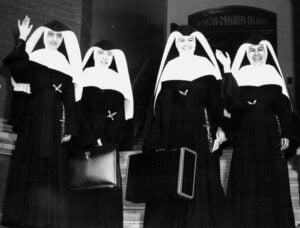
The development of the Latin American District offers clear evidence that the School Sisters of Notre Dame answered the Church's call. The first mission outside the continental United States was in Puerto Rico in 1915. Eleven School Sisters of Notre Dame from the provinces of Baltimore, Mankato, St. Louis and Milwaukee arrived in San Juan. They began their educational work at Colegio San Agustín and, in 2016, a group of Sisters took over Colegio de Caguas. And so it went on successively until 1956, with five schools. In these institutions, in addition to traditional classes, the sisters taught handicrafts and embroidery, providing skills that enabled the girls to earn a living. Over the course of 80 years, hundreds of American sisters from different provinces dedicated themselves to this noble mission in Latin America.

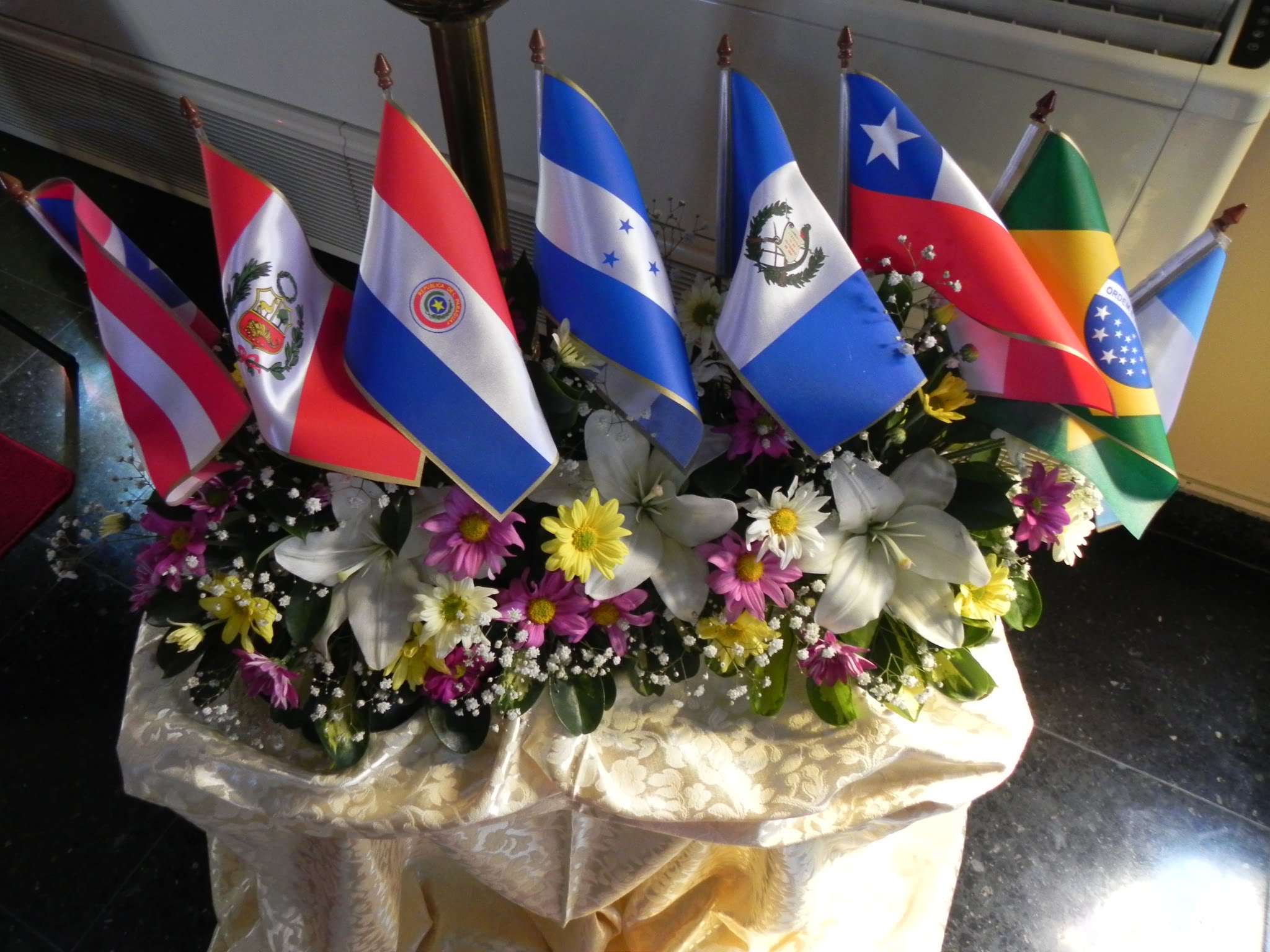
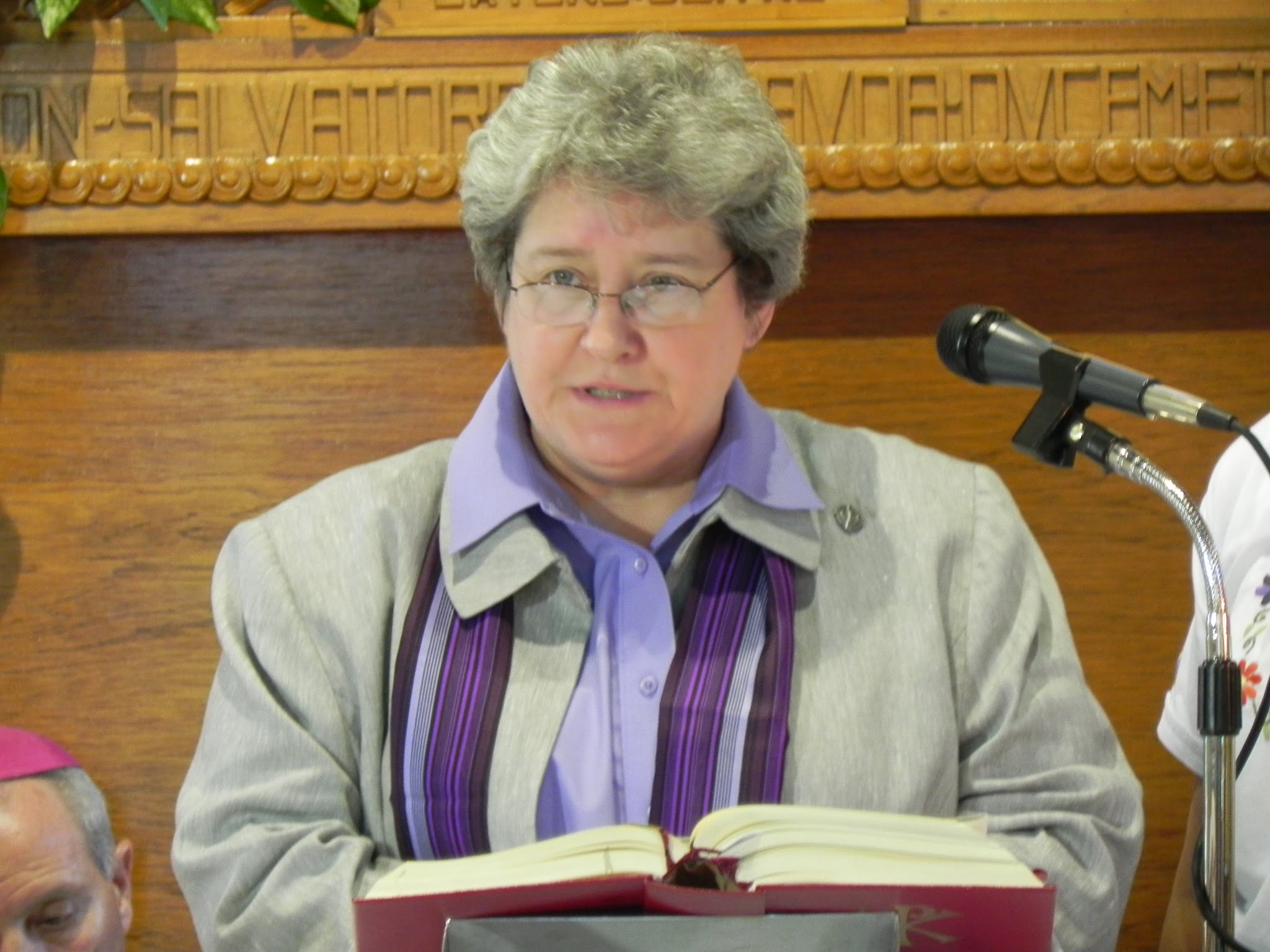

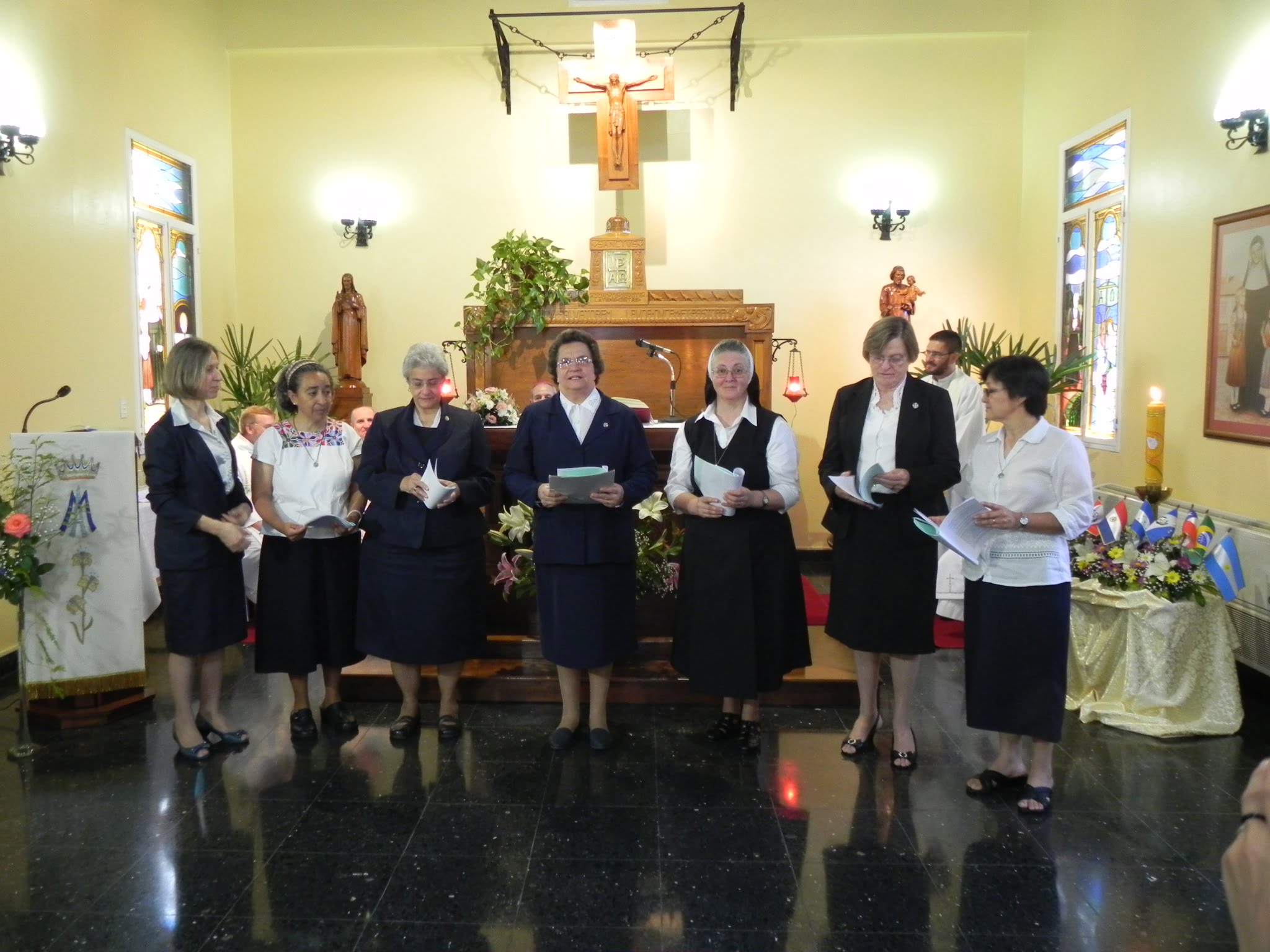
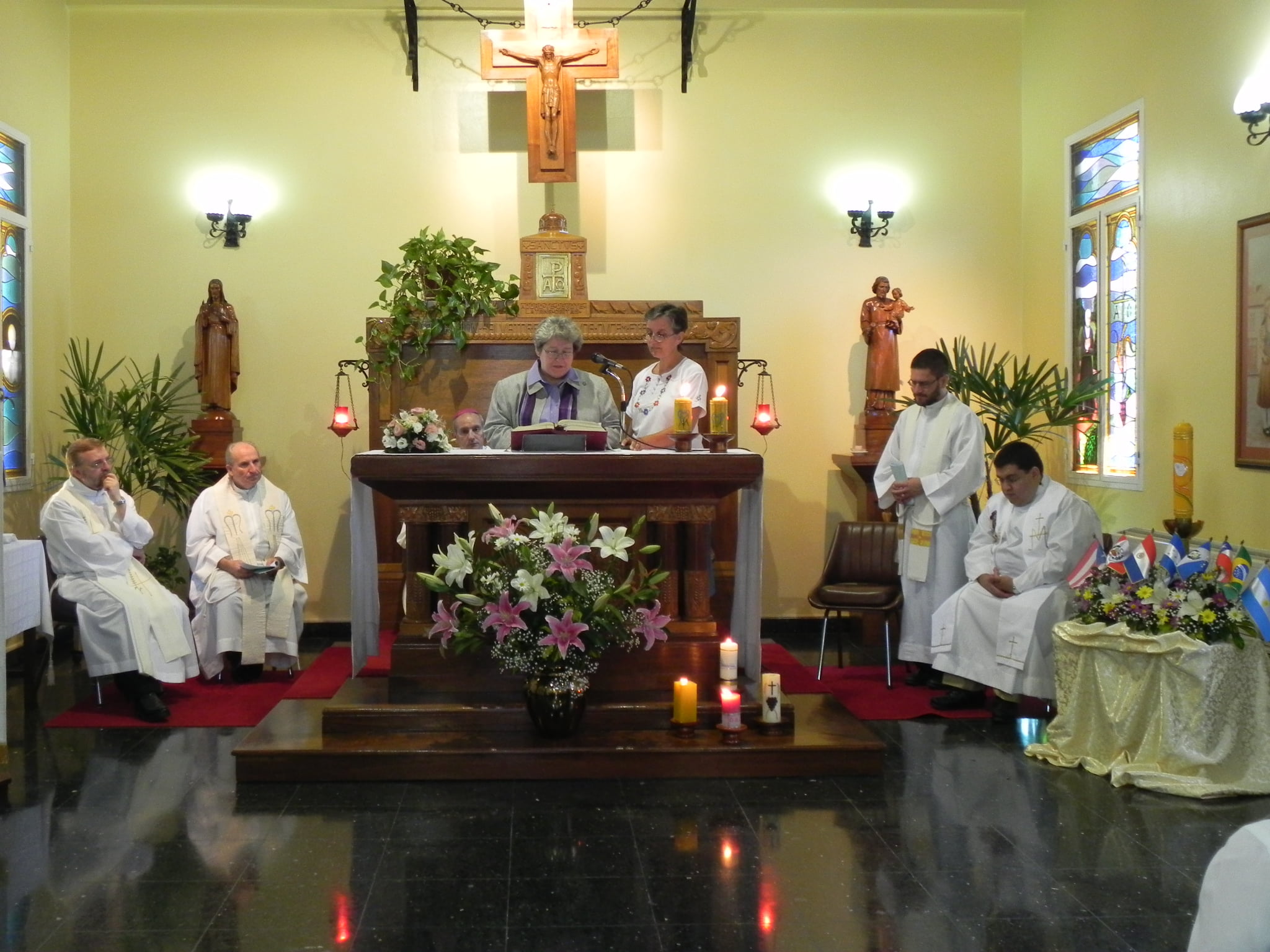
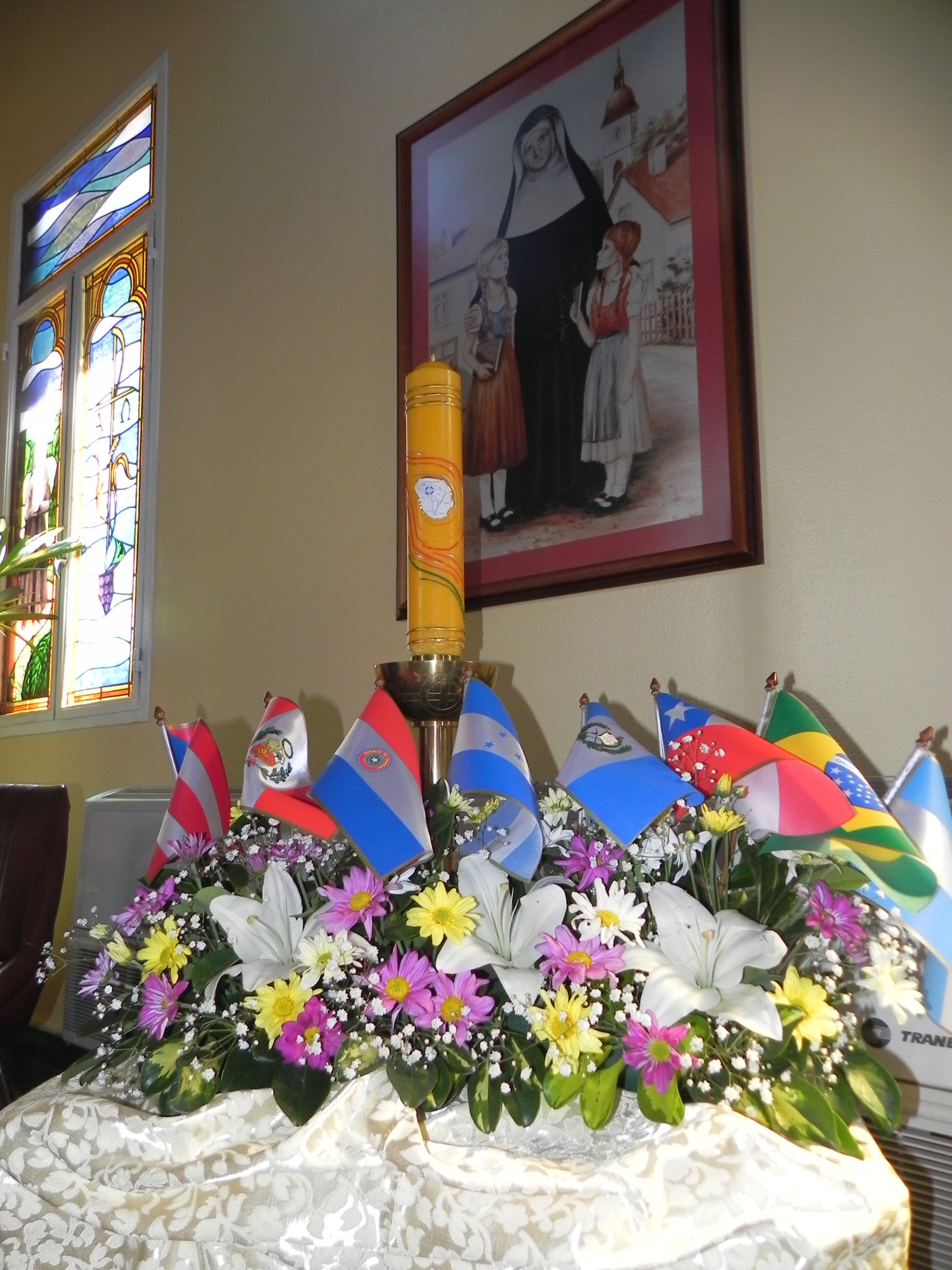
The Way of unit of America Latin America
O Senhor nos chamou para sermos instrumentos de transição e caminhar em unidade ao serviço do Reino.
No início dos anos noventa, surgiu um sonho em um grupo das HENS: um Sonho de Unidade para toda a América Latina e o Caribe. Esse sonho teve seus avanços e retrocessos até que... "ouvimos o chamado de Deus e ele encontrou resposta no coração de pessoas fortes na fé, com uma visão ampla e valentes na ação". Não havia mais como não realizá-lo.
Formaram-se comitês para ajudar a dar forma a esse sonho e decidir direções futuras. O sonho consistia em formar, a partir de quatro unidades, uma só Província. A data dessa unificação foi fixada e os caminhos foram traçados, não sem dor e sofrimento, mas ao mesmo tempo percebemos a riqueza e a esperança que nos aguardavam.
De reunião em reunião, definiram-se as diretrizes e escolheu-se o Conselho Provincial que assumiria essa primeira gestão. Chegou o dia 8 de dezembro de 2012, quando em Adrogué, Argentina, em uma celebração eucarística, a Irmã Mary Maher, Superiora Geral, leu o Decreto de Fundação da nova Província e acendeu uma vela, representando a Província que estava surgindo: PROVÍNCIA DA AMÉRICA LATINA E DO CARIBE. Essa vela foi entregue ao primeiro Conselho. Esse ritual tocou profundamente o coração de cada casa que foi testemunha desse momento histórico.
Todas compartilhando a mesma missão, o mesmo carisma e as mesmas buscas, dentro de uma pluralidade de estilos de vida e histórias.
Como S.E.C. 61 nos chama a "fomentar a unidade e capacitar-nos para proclamar a Boa Nova" como nosso ministério.
E a unificação das quatro unidades se concretizou na nova Província da América Latina e do Caribe, no dia 8 de dezembro de 2012, iniciando assim uma nova unidade e uma nova identidade.
O processo de deixar as estruturas anteriores não foi fácil. Tornar-se uma só mente e um só coração é um exercício contínuo e, portanto, estamos nos movendo ao longo desse caminho. Somos uma Província de muitas culturas, uma rica história, duas línguas oficiais, além de nosso idioma internacional. Os desafios são muitos.
No início, a Província era formada por oito países (Argentina, Brasil, Chile, Paraguai, Peru, Honduras, Guatemala e Honduras), mas atualmente a Província da América Latina e do Caribe abrange apenas seis países: Argentina, Brasil, Paraguai, Peru, Honduras e Porto Rico.
"O que o futuro trará está nas mãos de Deus".
Com nossa Beata Maria Teresa de Jesus, CONFIAMOS E ARRISCAMOS...
Nosso Governo
In order to be able, as a community of faith, to respond to God and serve effectively, we establish structures of governance that free us for the ways of the Spirit. Our governance stems from our shared life and mission and, at the same time, invigorates them.
The structures of government at local, provincial and international level provide for the participation of each member and the exercise of authority. Because the Spirit is at work in each Sister, she shares responsibility for the life and mission of the Congregation and for the common effort to seek and do God's will. Each one also supports the Sisters who are called by the community to accept the ministry of authority, granted by God to our Congregation, through the Church, when it approved our Constitution. In exercising this responsibility, these Sisters, in a special way, encourage us to be faithful to our charism and unite and guide us in the fulfillment of our mission. Their leadership, in openness to the Spirit, is a service of love.
We share Mother Teresa's conviction that the central government of our Congregation strengthens us in proclaiming the Good News and is indispensable for fostering unity. The central government unites us across nations and cultures and unites us in our mission.

Foto Conselho Provincial / Da esquerda para a direita: Irmã Silvia, Irmã Susana, Irmã Mary e Irmã Veroni
Provincial Council
Provincial: Irmã Mary Kennedy
Provincial Vicar: Irmã Susana Guadalupe Tomatti
Provincial Councillor: Irmã Veroni Teresinha de Medeiros
Provincial Councillor: Irmã Silvia Regina Freitas
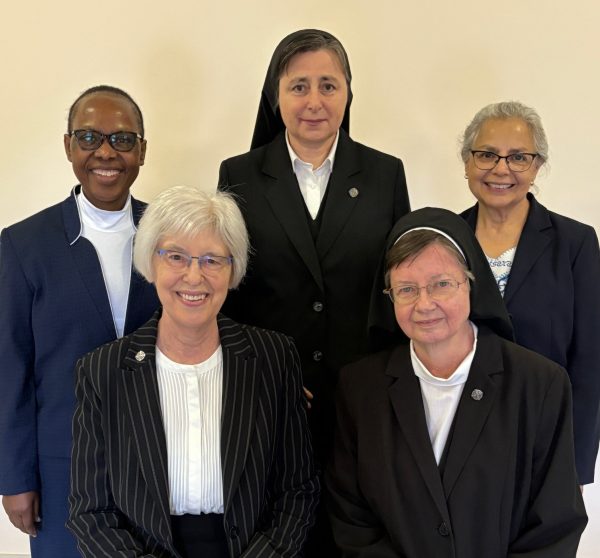
Foto Conselho Geral /
Conselho Geral
Conselheira Geral: Irmã Carolyn Anyega
Conselheira Geral: Sestra M. Martina Radež
Conselheira Geral: Irmã Christine Garcia
Conselheira Geral/Vigária: Irmã Mary Kerber
Superiora Geral: Schwester M. Dominica Michalke